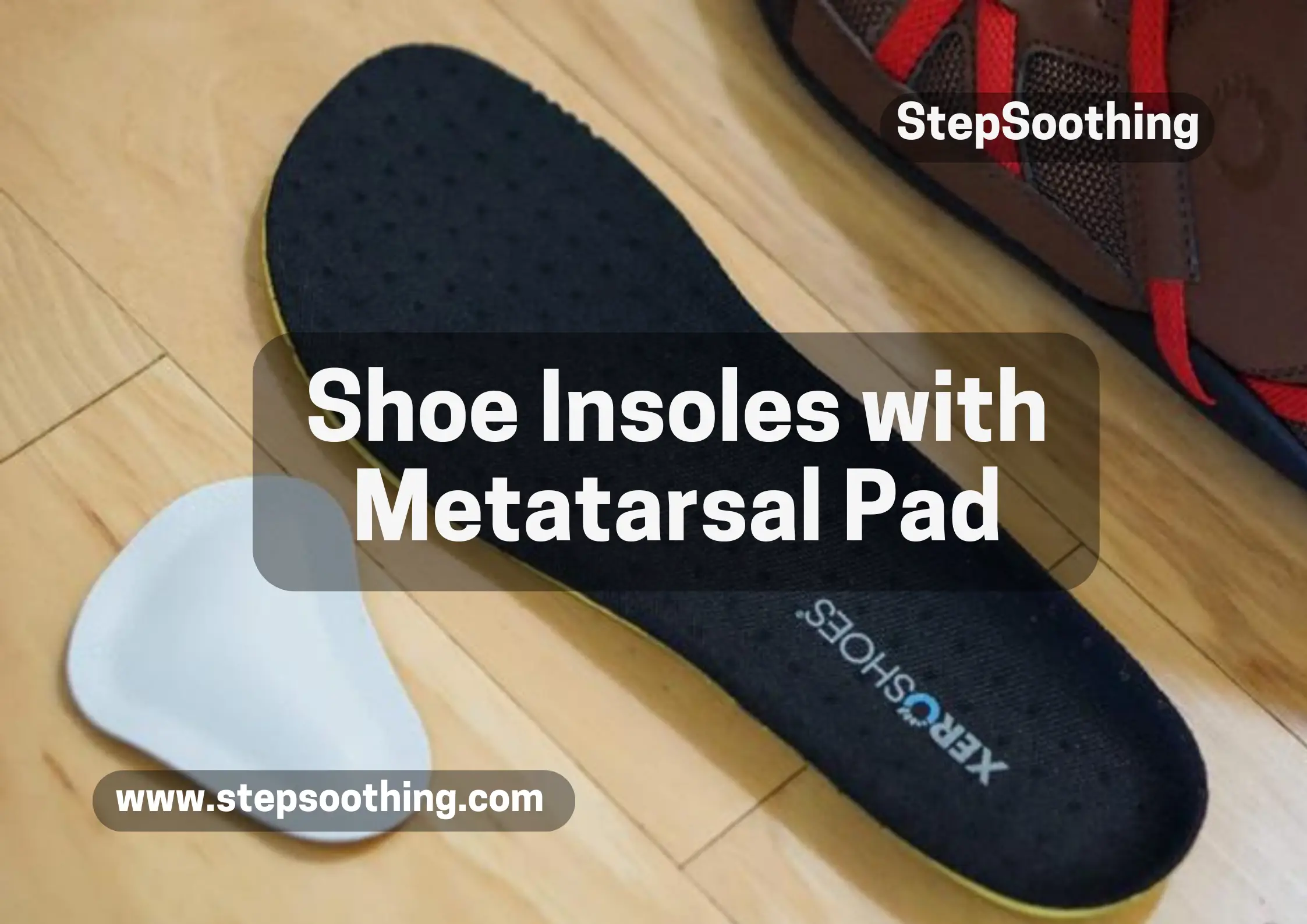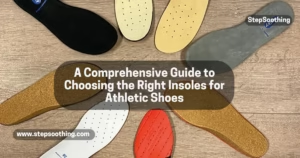Shoe insoles with metatarsal pad is designed to provide additional support and cushioning to the ball of the foot, offering relief for individuals experiencing metatarsalgia or other related conditions. The metatarsal pad, strategically placed in the insole, helps redistribute weight and alleviate pressure on the metatarsal heads, reducing discomfort and pain during walking or standing. These specialized insoles are crafted to enhance comfort and stability, making them a popular choice for individuals seeking relief from forefoot pain.
Shoe insoles with metatarsal pads provide targeted support. They enhance overall foot function and alignment. These insoles offer cushioning and support to the forefoot. They help reduce strain on metatarsals and surrounding structures, promoting better posture and gait. Metatarsal pads in the insoles enhance comfort and reduce stress on the forefoot. They are a valuable option for metatarsalgia and related foot conditions.
Key Takeaways
- Insoles with metatarsal pads provide specific support and cushioning to the ball of the foot. These offer relief for conditions like metatarsalgia.
- These specialized insoles can improve foot function and alignment, reducing strain on the metatarsals and promoting better posture and gait.
- Properly designed and fitted shoe insoles with metatarsal pads can significantly enhance comfort and alleviate forefoot pain.

Benefits of Metatarsal Pads in Shoe Insoles
Metatarsal pads are a common feature found in shoe insoles designed to alleviate metatarsalgia, a painful condition that affects the ball of the foot. These pads are typically made of soft, cushioning materials such as foam or gel, and are placed directly beneath the metatarsal bones in the foot.
Pain Relief and Comfort
One of the primary benefits of metatarsal pads in shoe insoles is their ability to provide pain relief and comfort to those suffering from metatarsalgia. By redistributing pressure away from the ball of the foot and towards the arch, metatarsal pads can help to reduce pain and discomfort caused by standing, walking, or running for extended periods.
Improved Foot Mechanics
Another benefit of metatarsal pads in shoe insoles is their ability to improve foot mechanics. Metatarsalgia can often be caused by poor foot alignment or mechanics, such as overpronation or supination. By providing additional support and cushioning to the metatarsal region, metatarsal pads can help to correct these issues and improve overall foot mechanics.
Enhanced Support for Metatarsal Region
Finally, metatarsal pads in shoe insoles can provide enhanced support for the metatarsal region of the foot. This can be particularly important for athletes or individuals who engage in high-impact activities, as the added support can help to prevent injuries such as stress fractures or plantar fasciitis.
Overall, the benefits of metatarsal pads in shoe insoles are clear. They provide pain relief and comfort, improve foot mechanics, and enhance support for the metatarsal region of the foot. Whether you suffer from metatarsalgia or simply want to improve your foot health, shoe insoles with metatarsal pads are a great option to consider.

Types of Shoe Insoles with Metatarsal Pads
Metatarsalgia is a common foot ailment that can be caused by a variety of factors, including high-impact activities, poor-fitting shoes, and aging. One effective way to alleviate pain and discomfort associated with metatarsalgia is to use shoe insoles with metatarsal pads. Here are three types of shoe insoles with metatarsal pads that can help provide relief.
Full-Length Insoles
Full-length insoles are designed to provide support and cushioning for the entire foot, including the metatarsal area. These insoles typically have a contoured shape that conforms to the natural arch of the foot, which can help reduce pressure on the ball of the foot. Full-length insoles with metatarsal pads are a good option for people who have metatarsalgia and other foot conditions, such as plantar fasciitis and flat feet.
3/4-Length Insoles
3/4-length insoles offer support and cushioning for the heel, arch, and ball of the foot, excluding the toes. They suit individuals with metatarsalgia focused on the ball of the foot. Insoles with metatarsal pads in this length can shift pressure from the metatarsal area, delivering precise support where needed.
Custom Orthotics
Custom orthotics are shoe insoles that are specifically designed to fit the unique shape and structure of a person’s foot. These insoles are typically made from a mold of the foot and are customized to provide support and cushioning where it is needed most. Custom orthotics with metatarsal pads can be a good option for people who have severe or chronic metatarsalgia, as they can provide maximum support and cushioning to help alleviate pain and discomfort.
In conclusion, shoe insoles with metatarsal pads can be an effective way to alleviate pain and discomfort associated with metatarsalgia. Full-length insoles, 3/4-length insoles, and custom orthotics are all good options, depending on the severity and location of the metatarsalgia. It is important to choose high-quality insoles that are designed to provide targeted support and cushioning to help alleviate pain and discomfort.

Selection Guide for Metatarsal Shoe Insoles
Metatarsalgia is a common foot condition that causes pain in the ball of the foot. One of the most effective ways to alleviate this pain is by using shoe insoles with a metatarsal pad. However, with so many options available, it can be challenging to select the right insoles. This section provides a selection guide for metatarsal shoe insoles to help you choose the best ones for your needs.
Material Considerations
The material of the insole is an essential consideration when selecting metatarsal shoe insoles. The insole should be made of a material that is durable, breathable, and moisture-wicking. A breathable material will help keep your feet cool and dry, while a moisture-wicking material will help prevent the buildup of sweat and odor.
Common materials used for metatarsal shoe insoles include foam, gel, and cork. Foam is the most common material used for insoles, as it is lightweight, flexible, and provides good shock absorption. Gel insoles are also popular, as they provide excellent cushioning and shock absorption. Cork insoles are known for their durability and moldability to the shape of the foot.
Fit and Sizing
The fit and sizing of the insole are also crucial considerations. The insole should fit snugly inside the shoe without crowding the toes or slipping around inside the shoe. It is essential to select the right size of the insole to ensure a proper fit.
Most insoles come in a range of sizes, from small to extra-large. It is essential to measure the length and width of your foot and compare it to the sizing chart provided by the manufacturer. Some insoles may also be trimmed to fit the shoe size.
Arch Type Compatibility
The arch type of the foot is also an essential consideration when selecting metatarsal shoe insoles. There are three main types of arches: low, medium, and high. It is essential to select an insole that is compatible with your arch type to provide the best support and comfort.
Some insoles are designed for specific arch types, while others are designed to be compatible with all arch types. It is essential to read the product description carefully to ensure that the insole is compatible with your foot’s arch type.
In summary, selecting the right metatarsal shoe insoles can help alleviate pain and discomfort caused by metatarsalgia. When selecting insoles, it is essential to consider the material, fit and sizing, and arch type compatibility. By following this selection guide, you can select the best insoles for your needs.
Maintenance and Care for Insoles with Metatarsal Pads
Insoles with metatarsal pads are designed to provide extra support and comfort to the ball of the foot. To ensure that they last as long as possible, it is important to take proper care of them. Here are some tips for maintaining and caring for your insoles with metatarsal pads:
Cleaning
Regular cleaning is essential to keep your insoles with metatarsal pads in good condition. To clean them, remove them from your shoes and gently wipe them down with a damp cloth. Avoid using harsh chemicals or abrasive materials, as these can damage the insoles. Allow them to air dry completely before placing them back in your shoes.
Storage
When not in use, store your insoles with metatarsal pads in a cool, dry place. Avoid exposing them to direct sunlight or extreme temperatures, as this can cause the materials to break down and deteriorate.
Replacement
Insoles with metatarsal pads are designed to provide support and comfort for a certain period of time. Over time, the materials may break down and lose their effectiveness. If you notice that your insoles are no longer providing the support and comfort you need, it may be time to replace them.
Additional Tips
Here are some additional tips to help extend the life of your insoles with metatarsal pads:
- Rotate your insoles regularly to help distribute wear and tear evenly.
- Avoid wearing your insoles in wet conditions, as this can cause them to deteriorate more quickly.
- If you have a medical condition that requires special care or treatment, consult with your healthcare provider before using insoles with metatarsal pads.
By following these simple tips, you can help ensure that your insoles with metatarsal pads provide the support and comfort you need for as long as possible.



